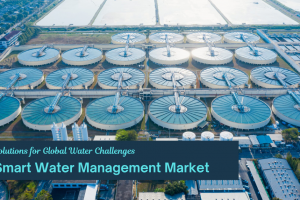The latest market report published by Credence Research, Inc. “Global Smart Irrigation Systems Market: Growth, Future Prospects, and Competitive Analysis, 2016 – 2028. The global smart irrigation systems market has grown steadily in recent years. It is expected to grow at a CAGR of 14.2% between 2023 and 2030. The market was valued at USD 1.6 Billion in 2022 and is expected to reach USD 4.0 Billion in 2030.
The global smart irrigation systems market is segmented based on type, component, end-use, and region. Climate-based and sensor-based systems are the key types, while controllers dominate the market in terms of components. In terms of end-use, the agriculture sector holds a significant share. North America leads the market growth, followed by Asia Pacific and Europe.
The market growth of smart irrigation systems is driven by the increasing demand for water conservation, effective water management techniques, and the adoption of cutting-edge technologies in agriculture, such as IoT and cloud computing. However, the high initial cost of installing smart irrigation systems poses a challenge, limiting their adoption by small-scale farmers and agricultural communities with tight budgets.
The global smart irrigation systems market has steadily grown, reaching a value of USD 1.6 billion in 2022. Key players in the market include Calsense, ET Water Systems, Hunter Industries, Hydropoint Data Systems, Orbit Irrigation Products, Rachio, Rainbird Corporation, Stevens Water Monitoring Systems, The Toro Company, and Weathermatic. These players focus on research and development, strategic alliances, and product innovations to maintain a competitive edge in the market.
Smart irrigation systems market major challenges revolve around various factors that require careful consideration and innovative solutions. One of the key challenges is the initial cost associated with implementing these systems, which can be a deterrent for potential users. The high upfront investment required for smart controllers, sensors, and other necessary equipment often discourages farmers or landscapers from adopting this technology. Additionally, compatibility issues pose another obstacle in the smart irrigation systems market. Integrating different components from various manufacturers can become a complex task as ensuring seamless communication between devices becomes crucial for efficient water management. Moreover, inadequate awareness and knowledge about these advanced technologies are also contributing to slower adoption rates across industries.
Why to Buy This Report-
- The report provides a qualitative as well as quantitative analysis of the global Smart Irrigation Systems Market by segments, current trends, drivers, restraints, opportunities, challenges, and market dynamics with the historical period from 2016-2020, the base year- 2021, and the projection period 2022-2028.
- The report includes information on the competitive landscape, such as how the market’s top competitors operate at the global, regional, and country levels.
- Major nations in each region with their import/export statistics
- The global Smart Irrigation Systems Market report also includes the analysis of the market at a global, regional, and country-level along with key market trends, major players analysis, market growth strategies, and key application areas.
Browse Full Report: https://www.credenceresearch.com/report/smart-irrigation-systems-market
Visit: https://www.credenceresearch.com/
Related Report: https://www.credenceresearch.com/report/automated-hydroponic-gardening-systems-market
Related Report: https://www.credenceresearch.com/report/fertilizer-dispensing-marketBrowse Our Blog:https://www.linkedin.com/pulse/vietnam-smart-irrigation-systems-market-size-industry-priyanshi-singh










